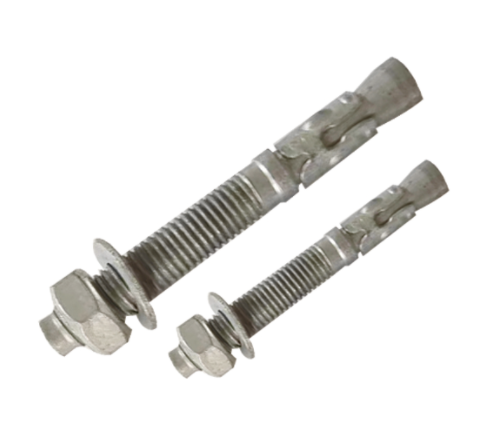Choosing the Right Quality Stainless Steel Drill Tail Wire for Your Project
Choosing the Right Quality Stainless Steel Drill Tail Wire for Your Project
Table of Contents
1. Understanding Stainless Steel Drill Tail Wire
2. Types of Stainless Steel Drill Tail Wire
3. Key Specifications to Consider
3.1. Tensile Strength
3.2. Diameter and Length
3.3. Corrosion Resistance
4. Applications of Stainless Steel Drill Tail Wire
5. Benefits of Using High-Quality Sta
Jun 03,2025

Choosing the Right Quality Stainless Steel Drill Tail Wire for Your Project
Table of Contents
1. Understanding Stainless Steel Drill Tail Wire
2. Types of Stainless Steel Drill Tail Wire
3. Key Specifications to Consider
3.1. Tensile Strength
3.2. Diameter and Length
3.3. Corrosion Resistance
4. Applications of Stainless Steel Drill Tail Wire
5. Benefits of Using High-Quality Stainless Steel Drill Tail Wire
6. Tips for Choosing the Right Stainless Steel Drill Tail Wire
7. Common Mistakes to Avoid
8. Frequently Asked Questions (FAQs)
9. Conclusion
1. Understanding Stainless Steel Drill Tail Wire
Stainless steel drill tail wire is a specialized product used in various industrial and construction applications. As it serves as a crucial component in fastening and connection systems, understanding its properties and types is essential for making informed decisions in project planning and execution. The wire's strength, flexibility, and corrosion resistance are pivotal for ensuring the longevity and performance of the final product.
2. Types of Stainless Steel Drill Tail Wire
There are several types of stainless steel drill tail wire available in the market, each designed for specific applications. Understanding these types allows you to choose the best one for your needs.
Type 1: AISI 304 Stainless Steel Wire
This wire type is a common choice due to its excellent corrosion resistance and formability. It is ideal for general-purpose applications and is often used in marine environments.
Type 2: AISI 316 Stainless Steel Wire
AISI 316 provides superior corrosion resistance compared to AISI 304, making it suitable for more demanding environments such as chemical processing or coastal areas.
Type 3: AISI 410 Stainless Steel Wire
AISI 410 wire is known for its hardness and wear resistance, making it a popular choice in applications requiring durability and strength under high-stress conditions.
3. Key Specifications to Consider
When selecting stainless steel drill tail wire, several specifications must be considered to ensure the wire meets project requirements.
3.1. Tensile Strength
Tensile strength refers to the maximum stress that a material can withstand while being stretched or pulled before failing. High tensile strength is crucial for applications where the wire will experience significant tension.
3.2. Diameter and Length
The diameter of the wire affects both its strength and flexibility. A thicker wire will generally have higher tensile strength, while a thinner wire may be more suitable for applications requiring bending or twisting. The length of the wire should also be considered, as longer lengths may introduce additional challenges during installation.
3.3. Corrosion Resistance
Corrosion resistance is a vital property for any wire used in environments exposed to moisture, chemicals, or extreme temperatures. High-quality stainless steel drill tail wire should have protective coatings or be made from alloys specifically designed to resist corrosion.
4. Applications of Stainless Steel Drill Tail Wire
Stainless steel drill tail wire is used in a multitude of applications across various industries. Some common uses include:
- **Construction and Building**: Used in fastening systems and structural reinforcements.
- **Automotive**: Employed in manufacturing parts that require high strength and durability.
- **Marine**: Essential for boat rigging and other applications exposed to saltwater.
- **Food Processing**: Utilized in environments requiring hygienic and corrosion-resistant materials.
5. Benefits of Using High-Quality Stainless Steel Drill Tail Wire
Investing in high-quality stainless steel drill tail wire offers numerous advantages:
- **Durability**: High-quality wire lasts longer, reducing the need for frequent replacements.
- **Strength**: Provides better performance under stress, enhancing overall project integrity.
- **Corrosion Resistance**: Protects against rust and degradation, crucial for outdoor and harsh environments.
- **Versatility**: Suitable for a wide range of applications, from construction to automotive use.
6. Tips for Choosing the Right Stainless Steel Drill Tail Wire
Selecting the right stainless steel drill tail wire involves careful consideration of various factors:
- **Evaluate Project Requirements**: Understand the demands of your specific application to choose the appropriate wire type and specifications.
- **Research Suppliers**: Look for reputable suppliers known for high-quality products. Check reviews and credentials.
- **Consider Environmental Factors**: Assess the environment where the wire will be used to ensure adequate corrosion resistance.
- **Consult Experts**: If unsure, seek advice from professionals in the field to make informed choices.
7. Common Mistakes to Avoid
When choosing stainless steel drill tail wire, avoid the following pitfalls:
- **Ignoring Specifications**: Failing to consider tensile strength, diameter, and length can lead to project failures.
- **Choosing Inexpensive Options**: While cost is important, compromising on quality may result in higher long-term expenses due to replacements.
- **Neglecting Corrosion Resistance**: Inadequate consideration of environmental factors can lead to premature wire degradation.
8. Frequently Asked Questions (FAQs)
Q1: What is the best type of stainless steel drill tail wire for marine applications?
A1: AISI 316 stainless steel drill tail wire is ideal for marine applications due to its superior corrosion resistance.
Q2: How do I determine the appropriate diameter for my project?
A2: Consider the tensile strength required for your application; thicker wires generally offer higher strength but less flexibility.
Q3: Can stainless steel drill tail wire be used in high-temperature environments?
A3: Yes, but it's essential to select an appropriate grade of stainless steel that can withstand the specific temperatures of your application.
Q4: How can I prevent corrosion in stainless steel drill tail wire?
A4: Choose wires with a protective coating, and avoid exposure to harsh chemicals or environments when possible.
Q5: What are the signs that I need to replace my stainless steel drill tail wire?
A5: Look for signs of corrosion, wear, or any decrease in strength and flexibility; these are indicators that replacement is necessary.
9. Conclusion
Choosing the right quality stainless steel drill tail wire is a critical step in ensuring the success of your project. By understanding the various types, key specifications, and potential applications, you can make informed decisions that enhance performance and longevity. Prioritizing high-quality materials and considering the specific demands of your environment will ultimately lead to better outcomes and greater satisfaction in your work. Investing time in this selection process will pay off through improved durability and functionality in your projects.

 中文版
中文版 English
English Русский
Русский عربي
عربي





